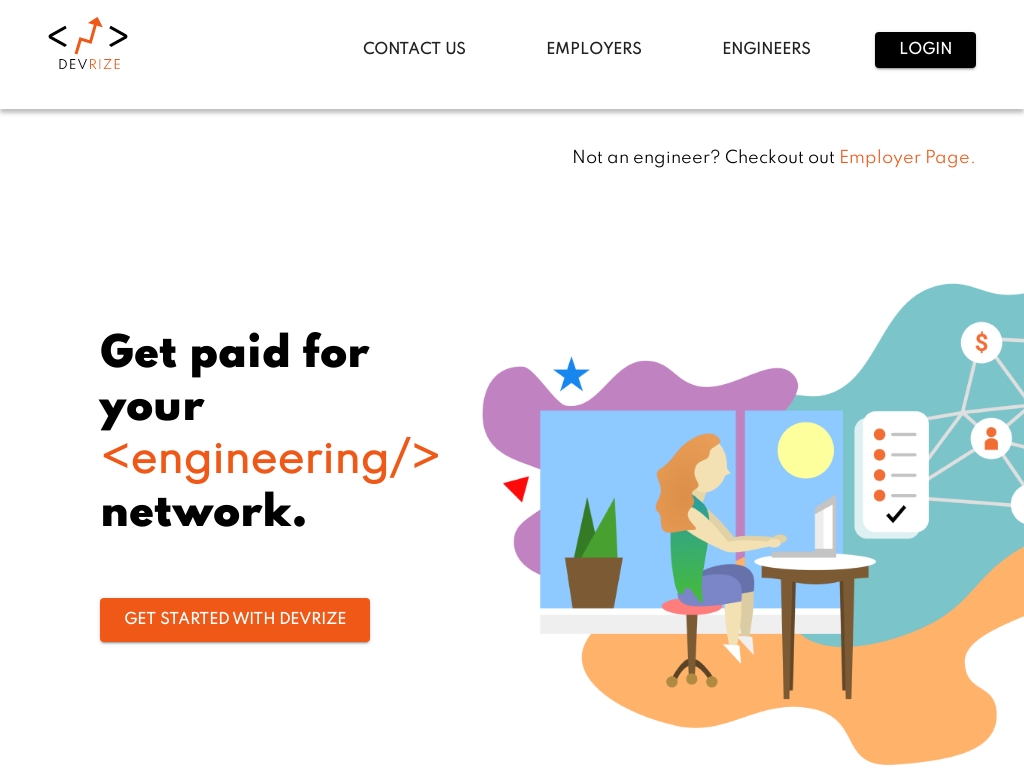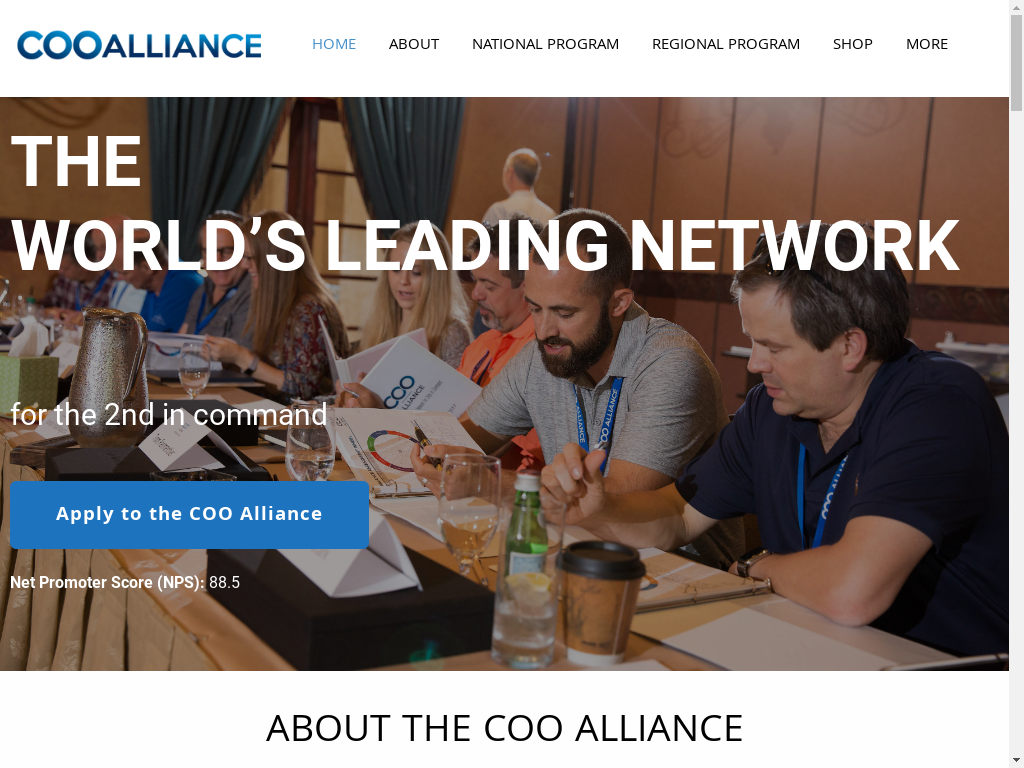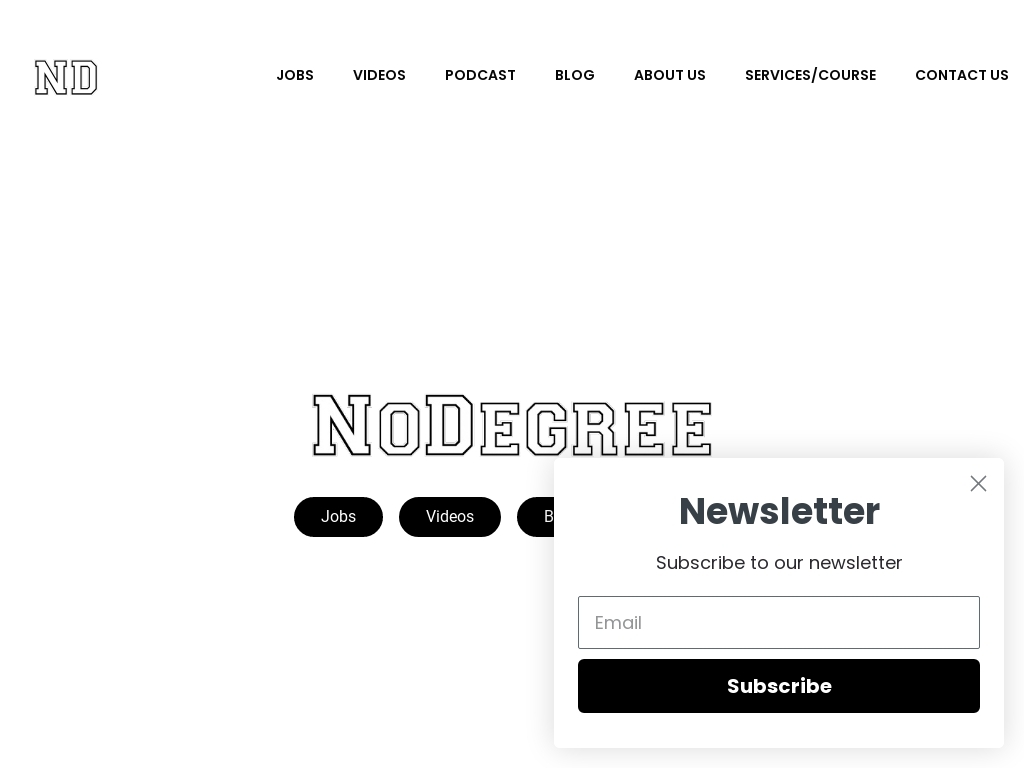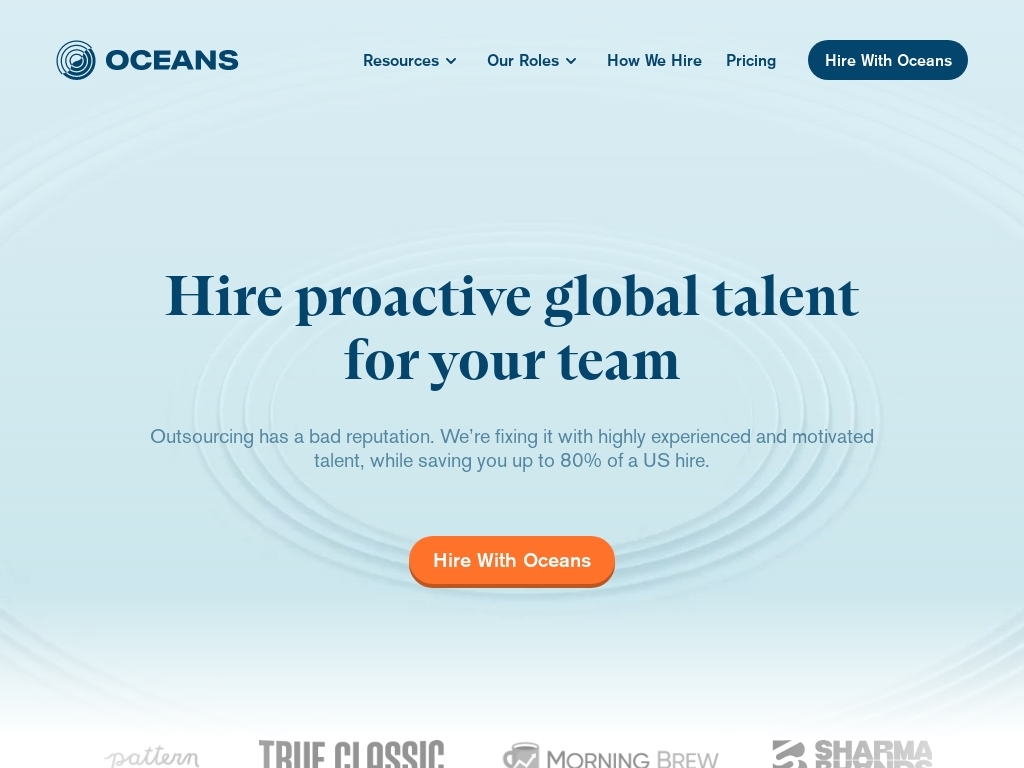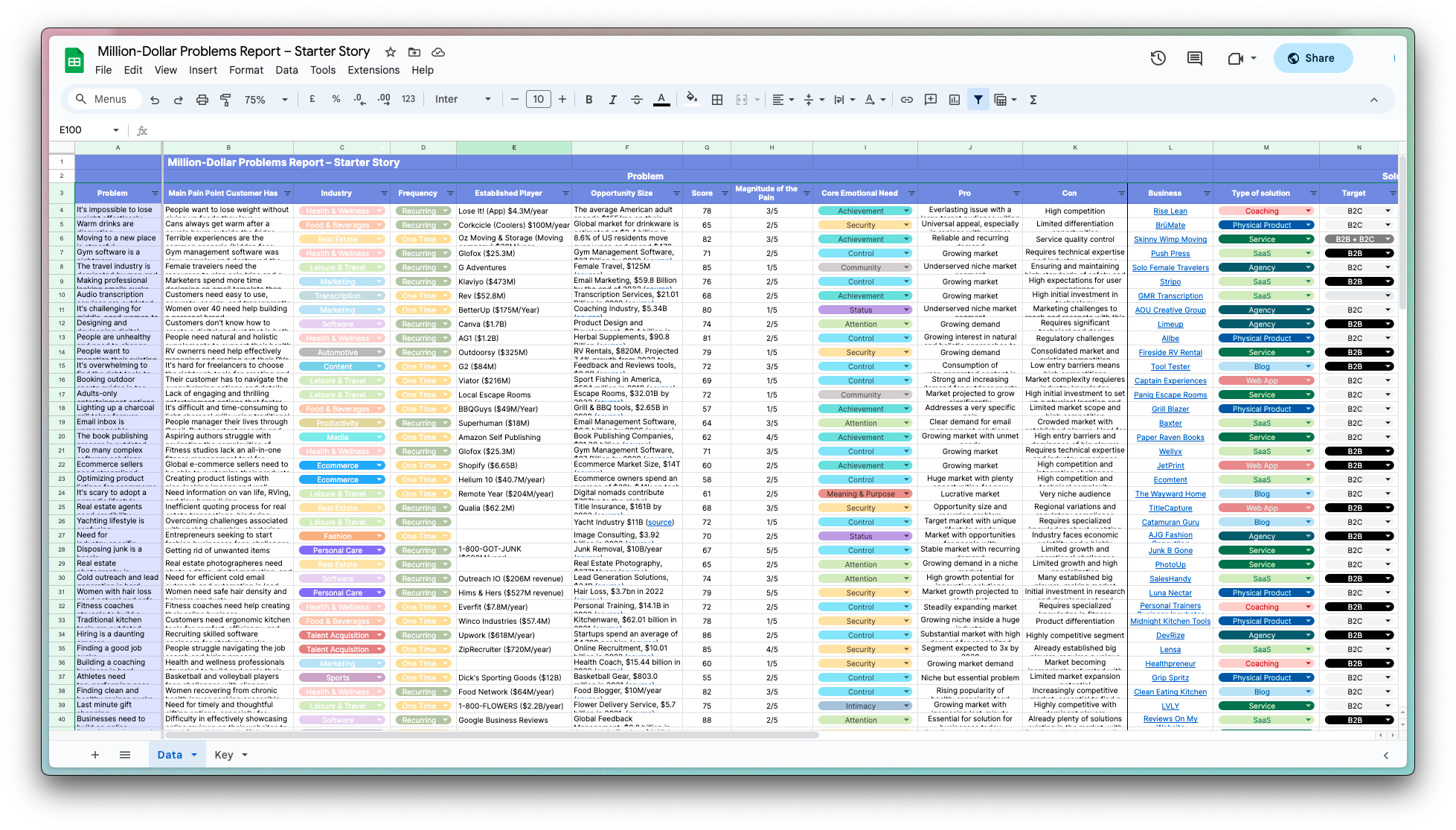
How Marshall Built and Sold a $52M Startup in 4 Years
Who is Marshall Haas?
Marshall Haas is a Texas-born entrepreneur who dropped out of college to pursue business ventures, founding Need/Want and successfully executing a $52 million exit with Somewhere.com. Before Somewhere.com, he engaged in entrepreneurial activities ranging from e-commerce to real estate, and he gained significant tech industry exposure by working at MetaLab, where he was involved in early-stage ventures.
What problem does Somewhere.com solve?
Somewhere.com helps businesses find affordable remote talent efficiently, saving them money and time in hiring and managing tasks that are needed but hard to balance with local resources.
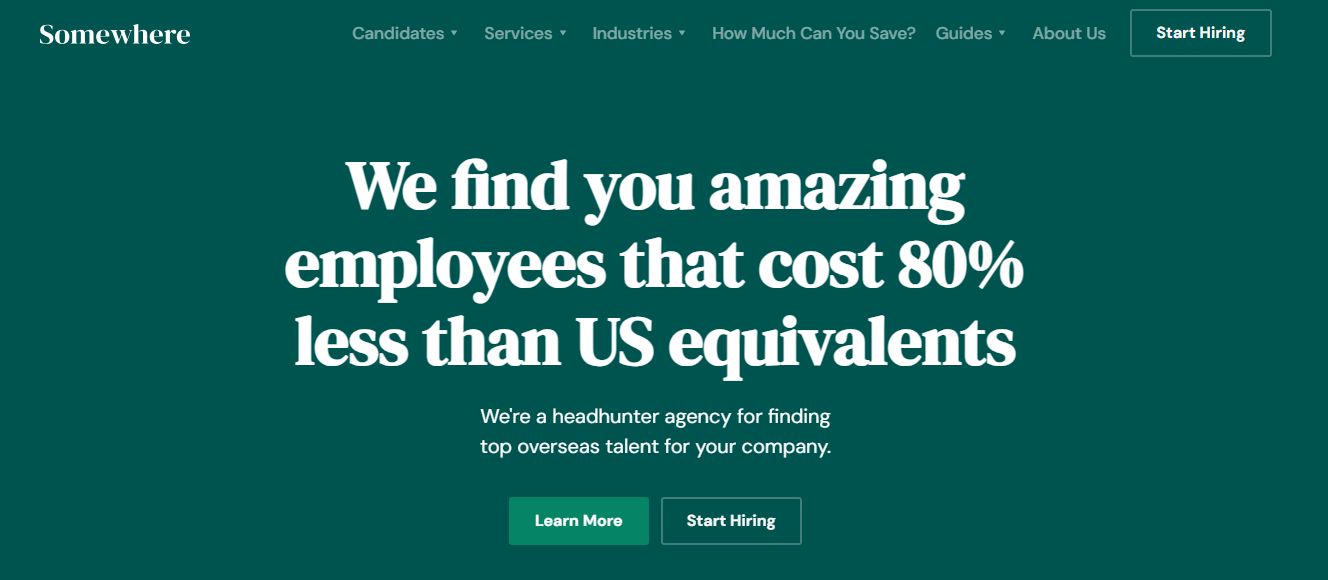
Homepage
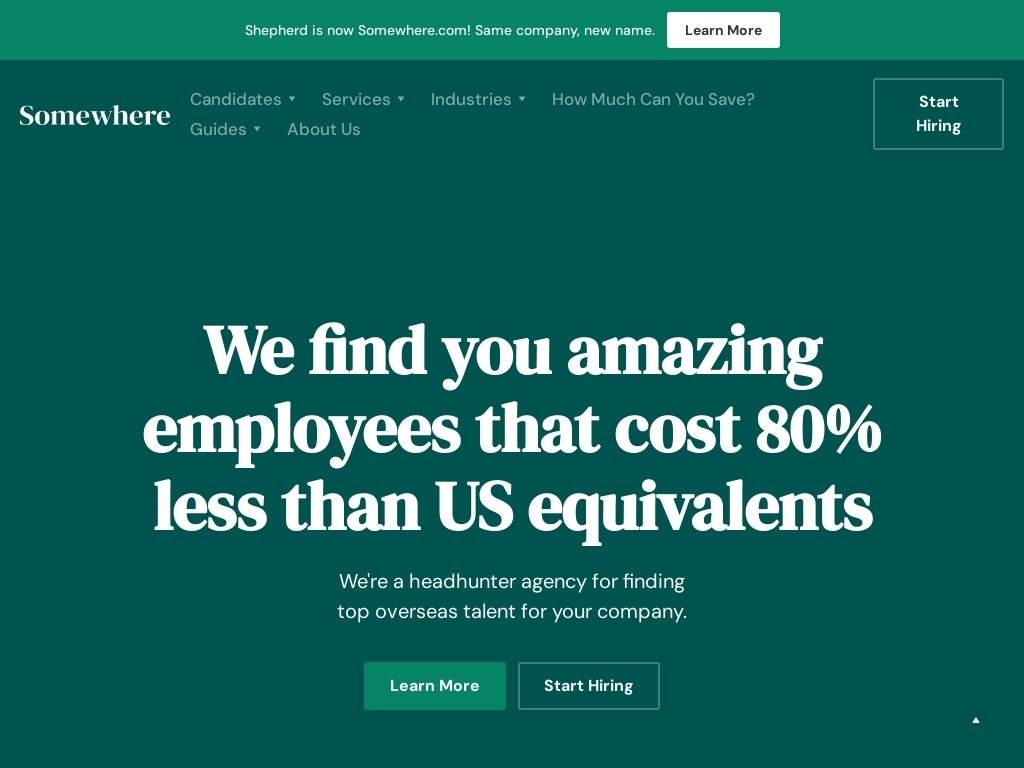
How did Marshall come up with the idea for Somewhere.com?
Marshall stumbled upon the idea for Somewhere.com, initially named Shepherd, from his personal experience of managing global teams and recognizing the need for effective cross-border hiring solutions. While visiting his remote team in the Philippines, Marshall identified the untapped potential in outsourcing skilled labor efficiently without the headaches typical to managing a fully remote workforce. His close association with Joemer Embernate, who initially suggested refining the outsourcing process, sparked the creation of a business that could fill the gap in the market.
They started small, testing the waters by sourcing talent for friends and gradually refined their model based on feedback and challenges they faced. One challenge was ensuring commitment from employers, which they overcame by introducing a refundable deposit to filter serious clients from casual inquiries. Their strategy was to simplify the hiring process for businesses, ultimately leading to a lean and profitable operation.
Marshall learned significant lessons along the way, such as the importance of iterating processes based on real-world feedback and making strategic adjustments to business models to improve profitability and efficiency. His experience highlights the value of observing unmet needs within your existing network or operations as a pathway to discovering impactful business ideas.
How did Marshall Haas build the initial version of Somewhere.com?
Marshall Haas built the initial version of Somewhere.com, formerly Shepherd, through an agile and efficient development process. The first prototype was conceptualized quickly, leveraging Haas's prior experience with outsourcing and remote teams from his time spent with the Peel and other Need/Want ventures. The product launch occurred within six days of concept, exhibiting Marshall's knack for rapid development cycles. Hard work coupled with strategic remote hiring practices enabled Haas to iterate on the design efficiently, solving problems pragmatically and adjusting processes as needed. This speed and resourcefulness were crucial, as building the product was inevitably challenging, demanding Haas to overcome initial skepticism and operational hurdles.
What were the initial startup costs for Somewhere.com?
- Time Investment: Marshall spent 782 hours between January and May 1st, 2024 working on the business, equating to a personal cost of $782 based on his recorded hourly investment.
What was the growth strategy for Somewhere.com and how did they scale?
Influencer Partnerships
Somewhere.com heavily relied on influencer marketing to fuel its growth. One of the most successful partnerships was with Nick Huber, who was initially a customer. He transitioned to becoming a key influencer for the company. Rather than just using paid advertisements, they strategically partnered with influencers who genuinely used and endorsed their services. Nick, for example, brought in a substantial amount of business through his social media presence, even converting his role into an equity stake in the company. This partnership model capitalized on Nick's strong Twitter (X) follower base, driving millions of impressions and significantly boosting Somewhere.com’s visibility and credibility.
Why it worked: This approach utilized the authentic influence of key individuals in the business community, connecting with an audience that trusted the influencers. By engaging influencers who believed in the product and used it themselves, they created genuine endorsements, leading to a higher conversion rate compared to traditional paid ads.
Word-of-Mouth & Referrals
Somewhere.com also saw significant growth through word-of-mouth and referral marketing. The main influencer Nick Huber, alongside other satisfied customers, played a pivotal role. They structured a smart affiliate program, offering a commission for any new business brought on board. This method engaged individuals already impressed by the service, encouraging them to become advocates and share their positive experiences with peers and followers.
Why it worked: Word-of-mouth and referral strategies leverage trust, which is crucial for attracting new customers. Recommendations from peers or industry authorities can be more persuasive than direct marketing, often resulting in higher retention rates as these new customers tend to have a built-in sense of loyalty from the start.
Social Media & Community Engagement
Building a strong social media presence was another significant channel for Somewhere.com. The company engaged actively on platforms like Twitter (X), driven by influencers and community discussions. Not just passive posting, but active participation in industry dialogues enabled the business to position itself as a thought leader and a trusted service provider. This was bolstered by their approach to transparency and “building in public,” where they shared their entrepreneurial journey, successes, and challenges openly.
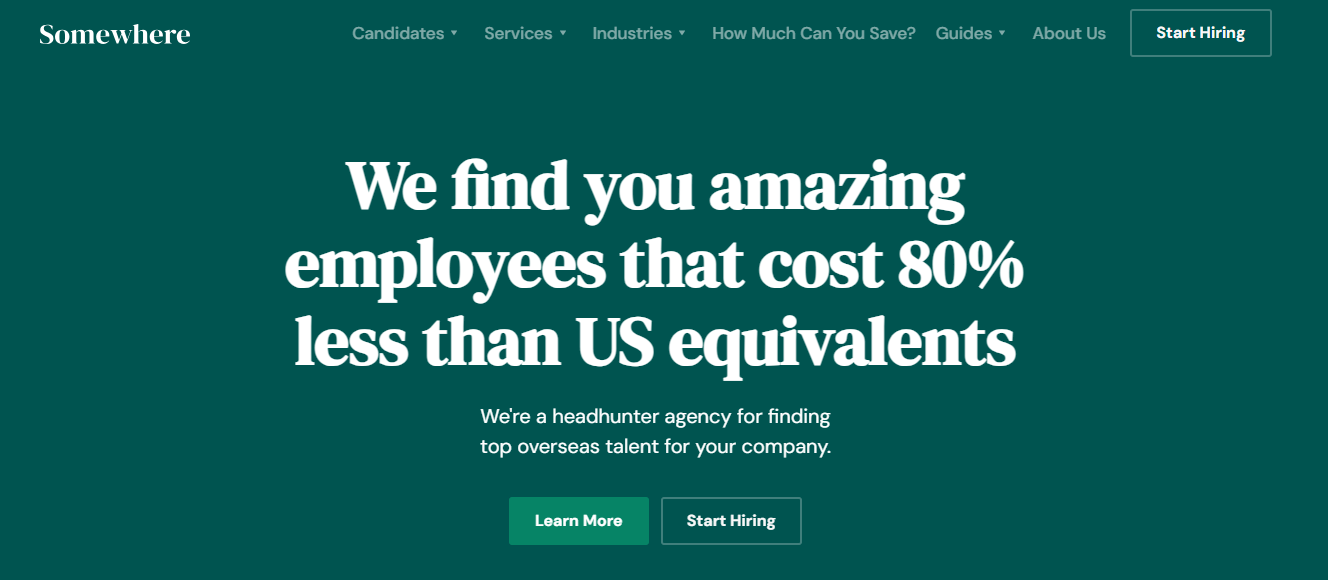
IG Post
Why it worked: This method tapped into the power of community engagement, creating a dialogue rather than a monologue. By actively participating in their industry’s community, Somewhere.com built a more engaged and loyal following, which translated into user acquisition and retention.
Strategic Partnerships
Somewhere.com expanded its reach by forming strategic partnerships, not only with influencers but also within business networks. They developed partnerships that extended their service offerings and enhanced their recruitment capabilities. This expansion, particularly into new markets like Colombia, helped boost their talent pool and service efficiency.
Why it worked: Such partnerships allowed Somewhere.com to enhance their core offerings and service scalability. It provided access to larger networks and resources, allowing them to efficiently manage increased demand and diversify their offerings to cater to a growing clientele.
What's the pricing strategy for Somewhere.com?
Somewhere.com, previously known as Shepherd, employs a pricing strategy where they charge a one-off finder's fee of $3,000 to $6,000 per hired candidate, making this a lean, high-margin business.
What were the biggest lessons learned from building Somewhere.com?
- Embrace Outsourcing: Somewhere.com leveraged affordable overseas talent to maintain strong margins, demonstrating the power of effective cost management without compromising on quality.
- Effective Delegation: Marshall Haas mastered delegation by gradually learning how to pass on responsibilities, enabling him to focus on strategic growth. This showcases the importance of trust and training in team building.
- Adapt Business Models: Implementing a refundable deposit system solved the issue of ‘tire kickers’, showing how small tweaks in business models can filter serious clients and enhance operations.
- Leverage Influencer Partnerships: Collaborations with influencers like Nick Huber expanded their reach significantly, highlighting the impact of strategic partnerships on business growth.
- Resilience in Challenges: Despite criticism and initial business model hiccups, persevering with innovative solutions ensured steady growth, emphasizing resilience as key in entrepreneurship.
Somewhere.com Acquisition: How much did Somewhere.com sell for and what was the acquisition price?
Somewhere.com, originally known as Shepherd, was sold for $52 million in May 2024 to a private equity group led by Nick Huber, with Marshall Haas retaining a 13.5% stake and a board seat.
Discover Similar Business Ideas Like Somewhere.com
|
|
Idea
|
Revenue
|
|---|---|---|
|
Devrize
|
Tech recruitment specialists for VC-backed startups.
|
$20K
monthly
|
|
Mercor
|
AI-driven recruitment platform linking specialized talent to AI projects.
|
$5.83M
monthly
|
|
COO Alliance
|
Peer network for COOs to enhance leadership skills.
|
$208K
monthly
|
|
NoDegree.com
|
"Career platform helping non-grads find well-paying jobs."
|
$33.3K
monthly
|
|
Ocean's Talent
|
High-skill outsourcing service connecting startups with top talent.
|
$1.25M
monthly
|
More about Somewhere.com:
Who is the owner of Somewhere.com?
Marshall Haas is the founder of Somewhere.com.
When did Marshall Haas start Somewhere.com?
2020
What is Marshall Haas's net worth?
Marshall Haas's business makes an average of $1.25M/month.
How much money has Marshall Haas made from Somewhere.com?
Marshall Haas started the business in 2020, and currently makes an average of $15M/year.
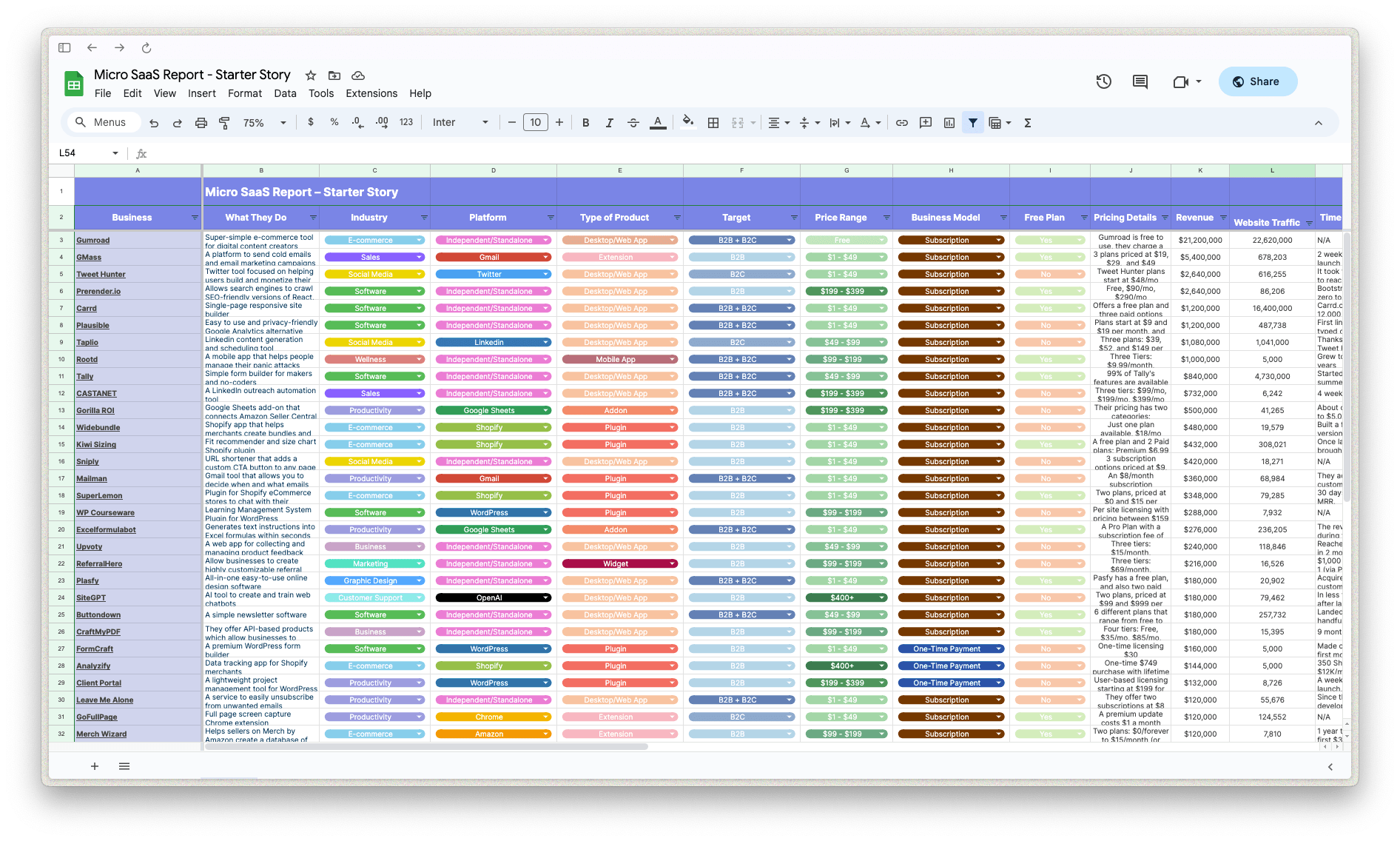
Download the report and join our email newsletter packed with business ideas and money-making opportunities, backed by real-life case studies.

Download the report and join our email newsletter packed with business ideas and money-making opportunities, backed by real-life case studies.

Download the report and join our email newsletter packed with business ideas and money-making opportunities, backed by real-life case studies.

Download the report and join our email newsletter packed with business ideas and money-making opportunities, backed by real-life case studies.

Download the report and join our email newsletter packed with business ideas and money-making opportunities, backed by real-life case studies.

Download the report and join our email newsletter packed with business ideas and money-making opportunities, backed by real-life case studies.

Download the report and join our email newsletter packed with business ideas and money-making opportunities, backed by real-life case studies.

Download the report and join our email newsletter packed with business ideas and money-making opportunities, backed by real-life case studies.
